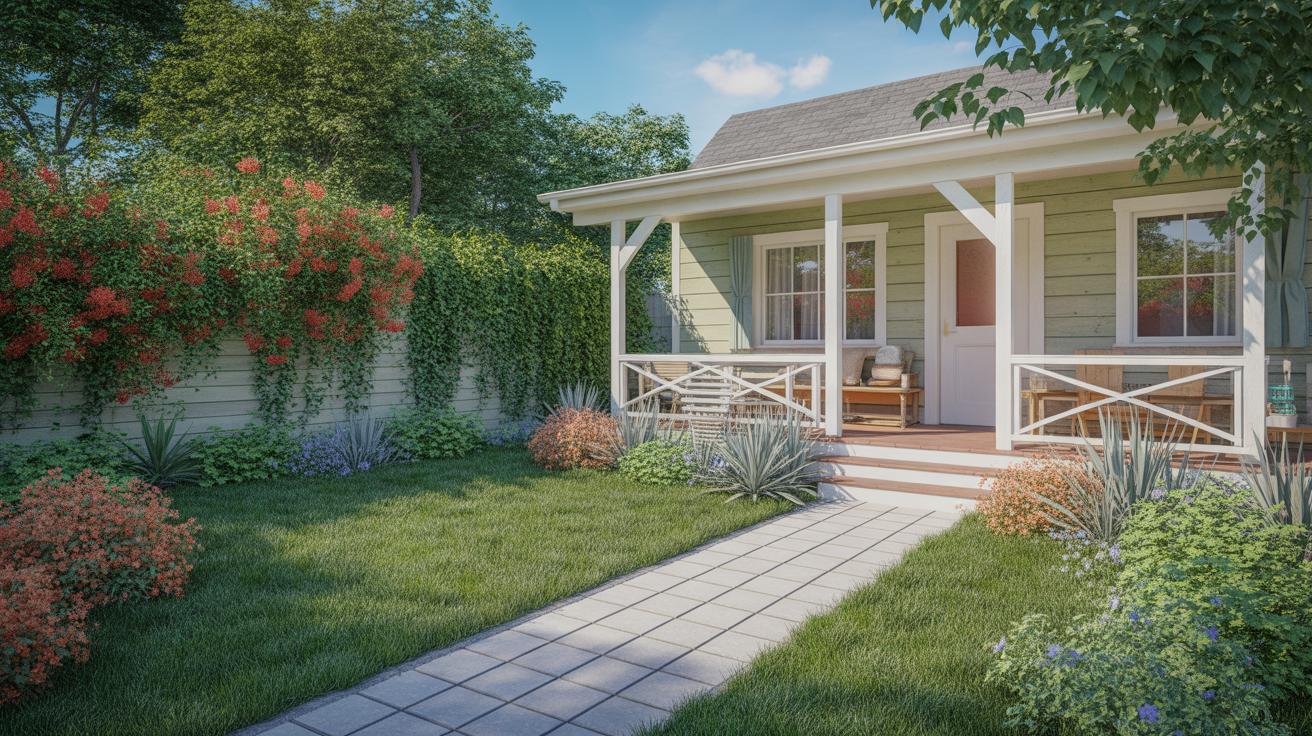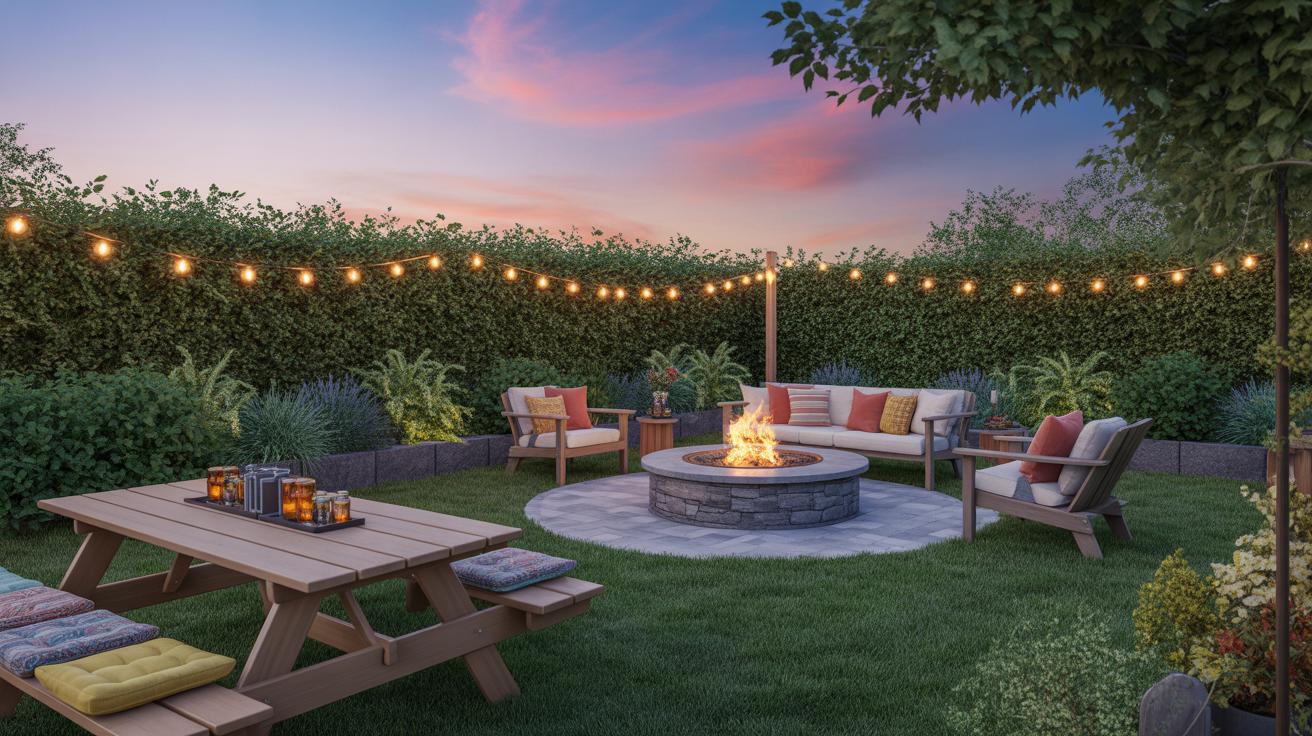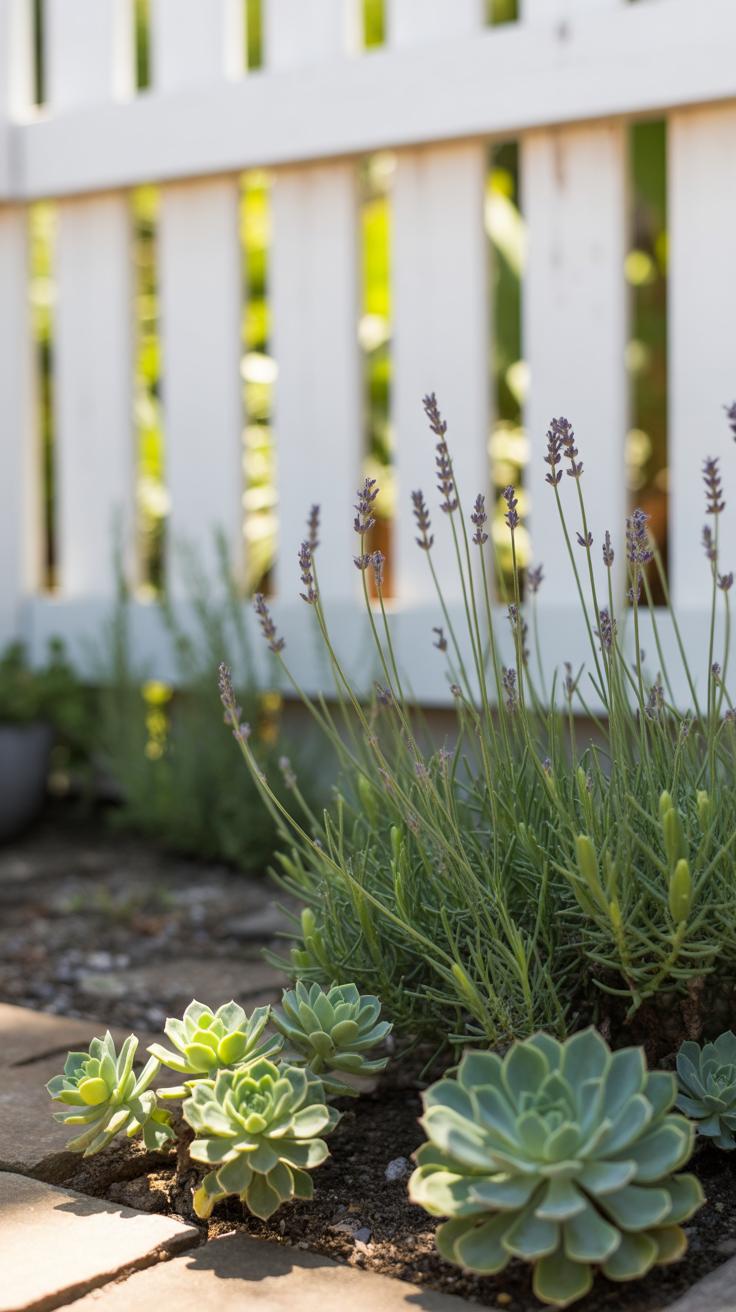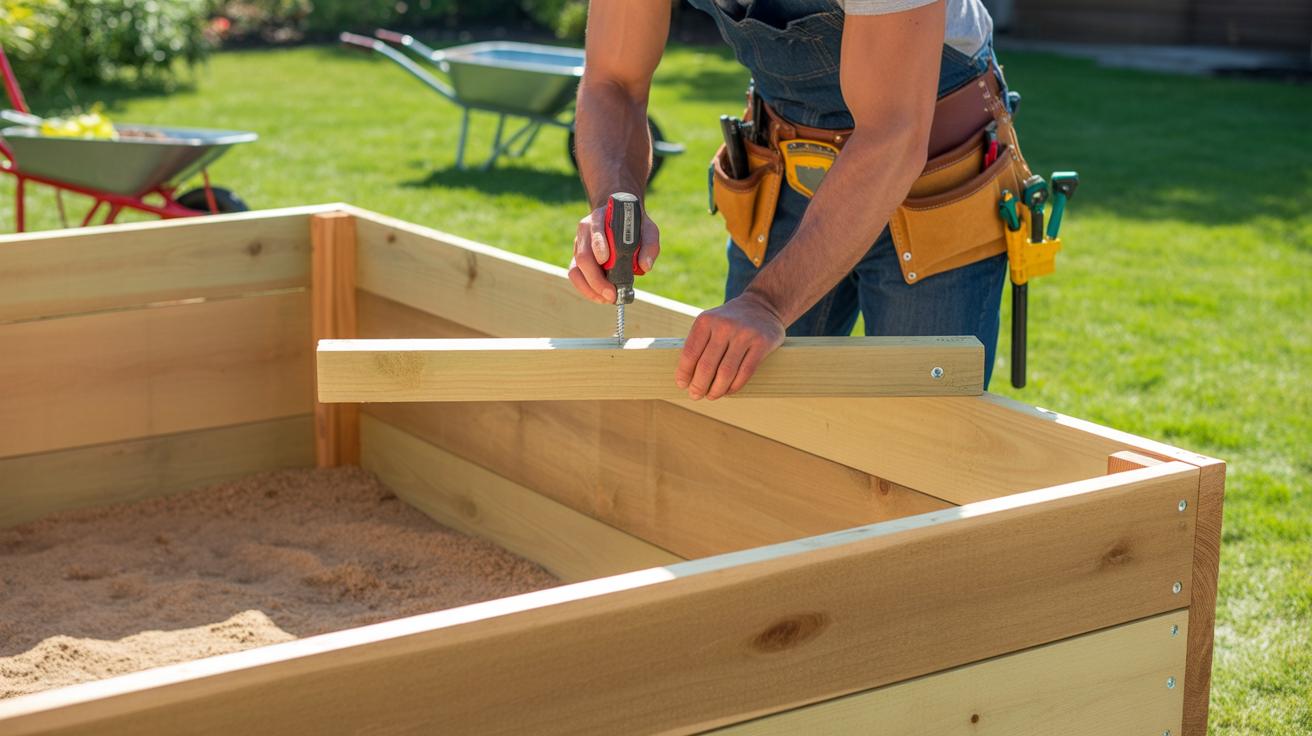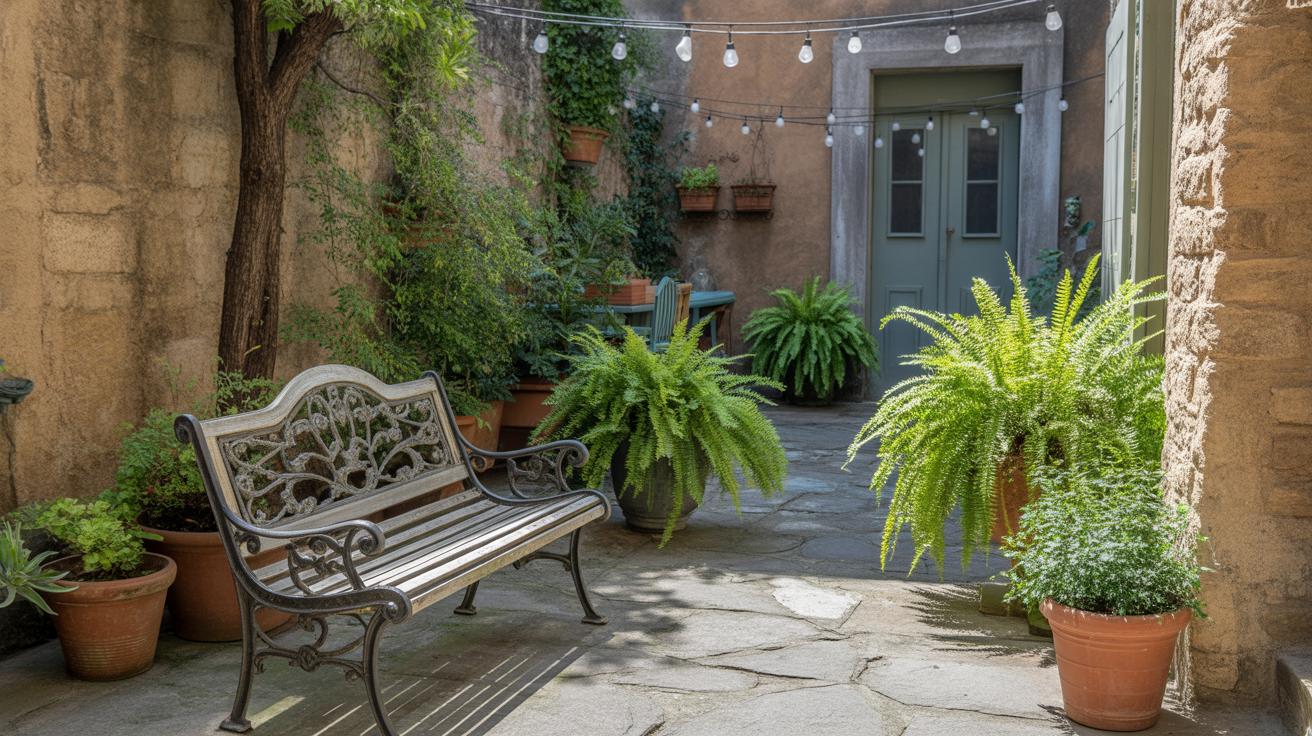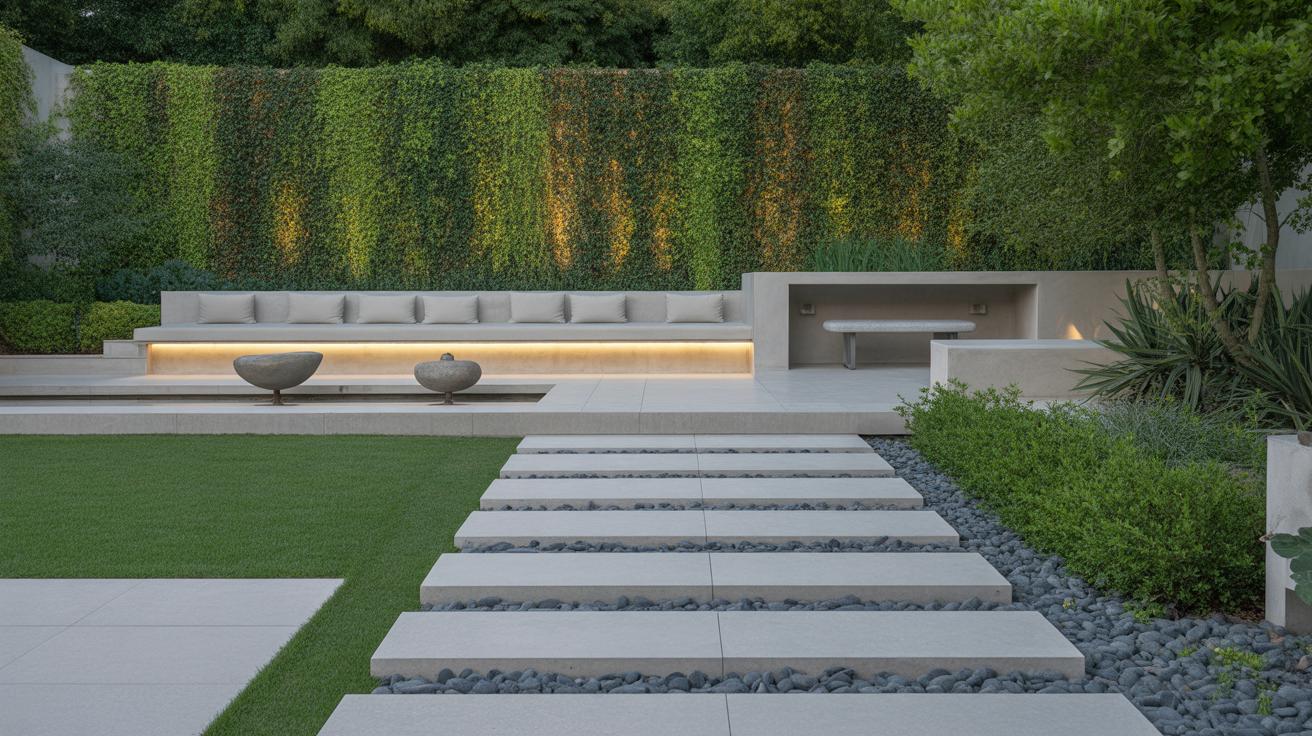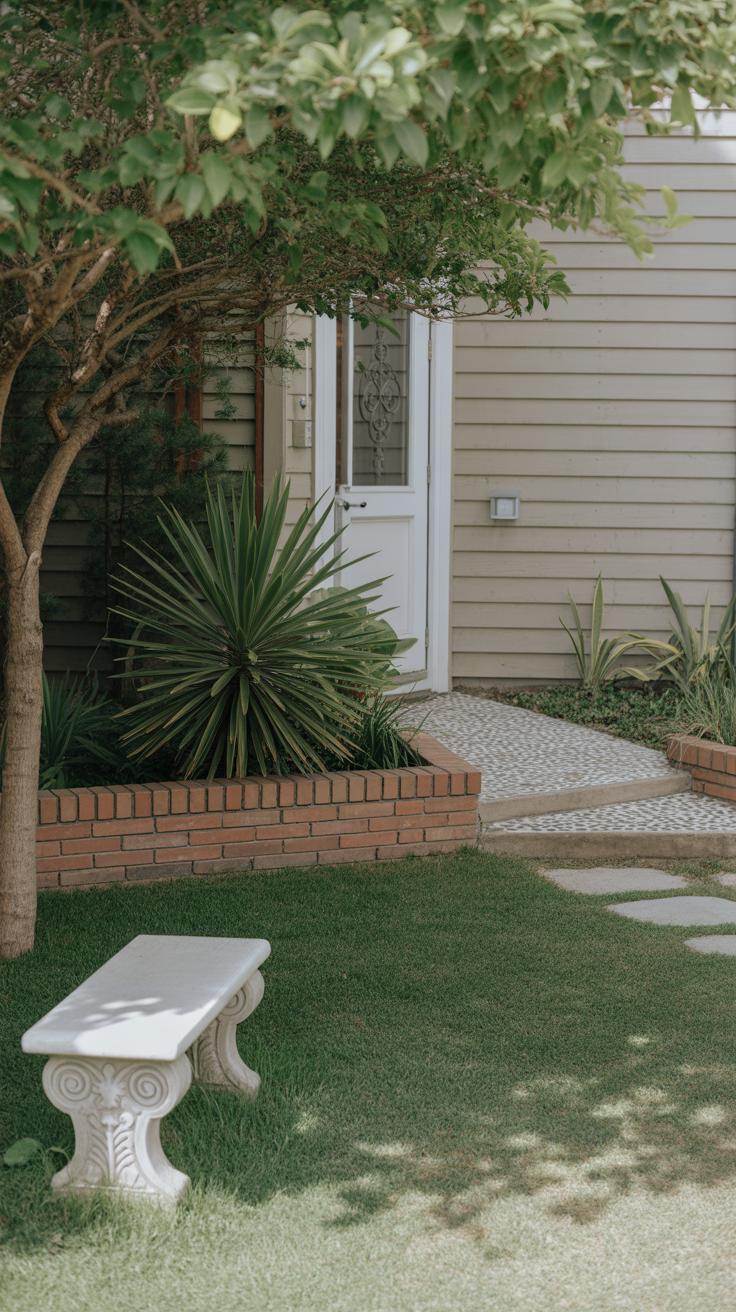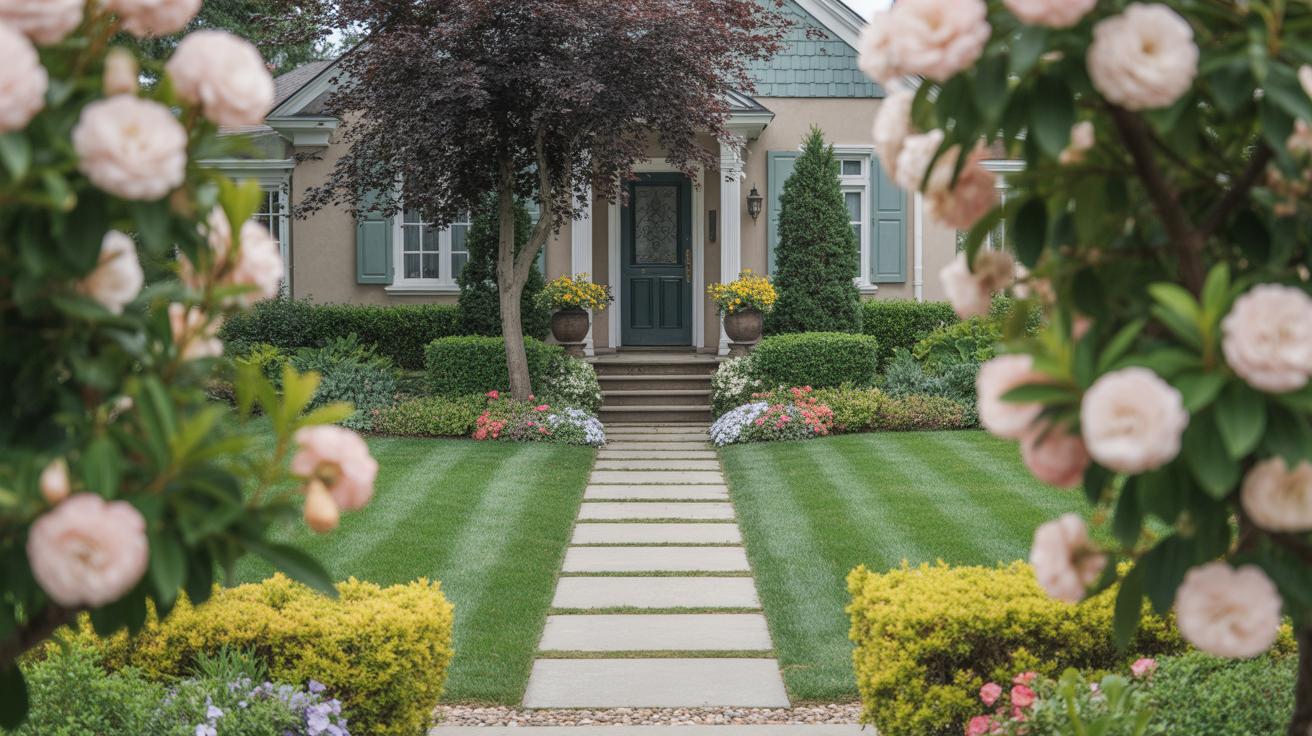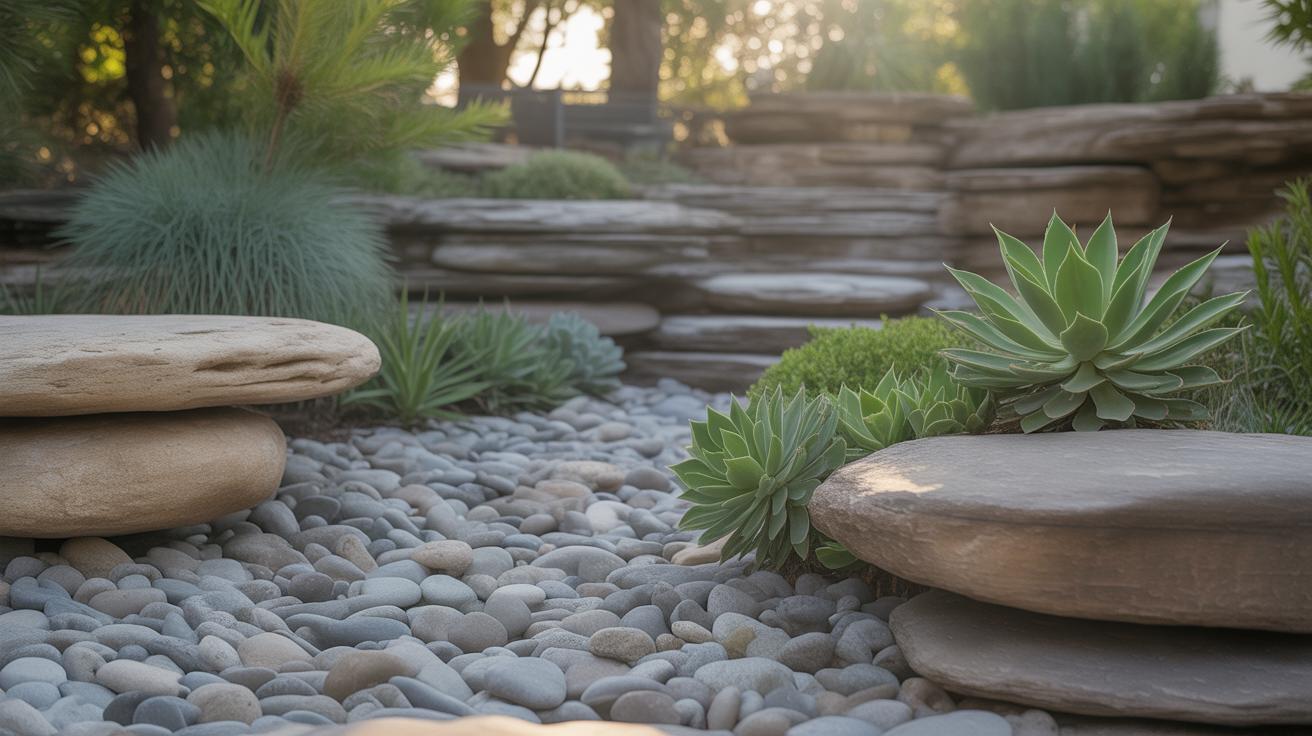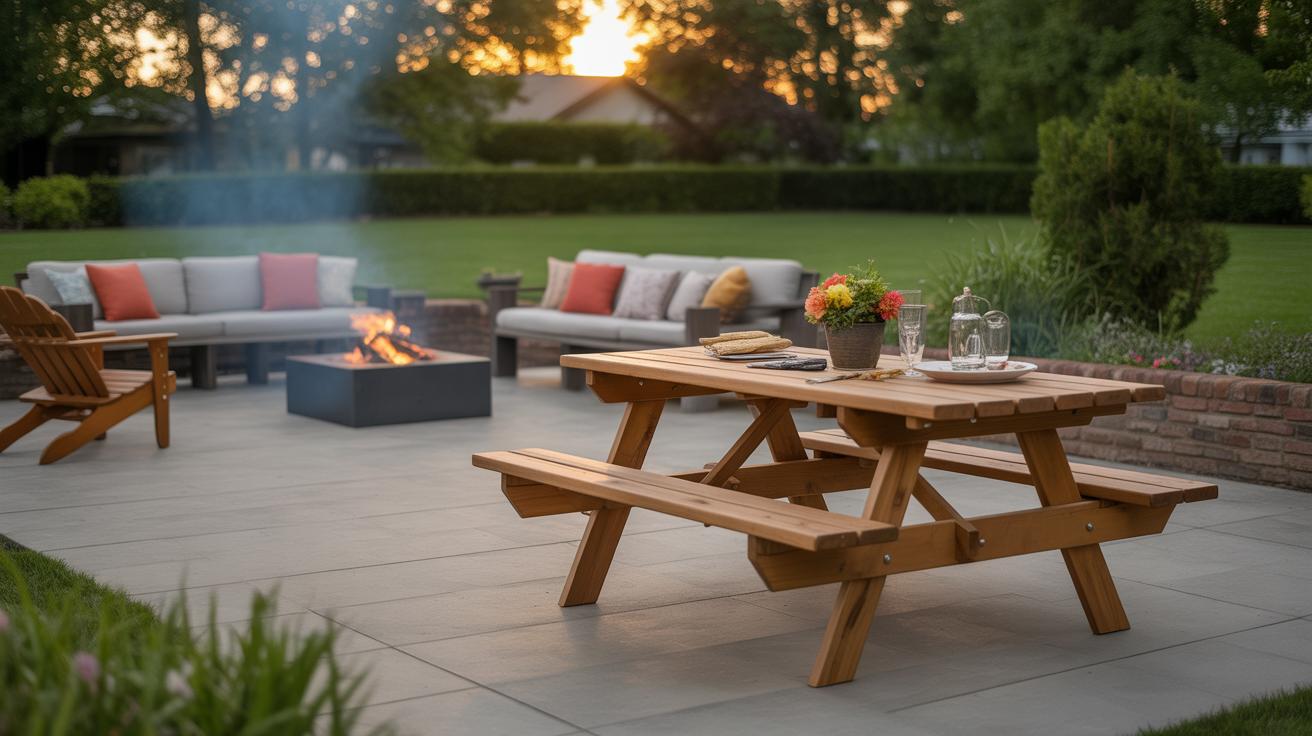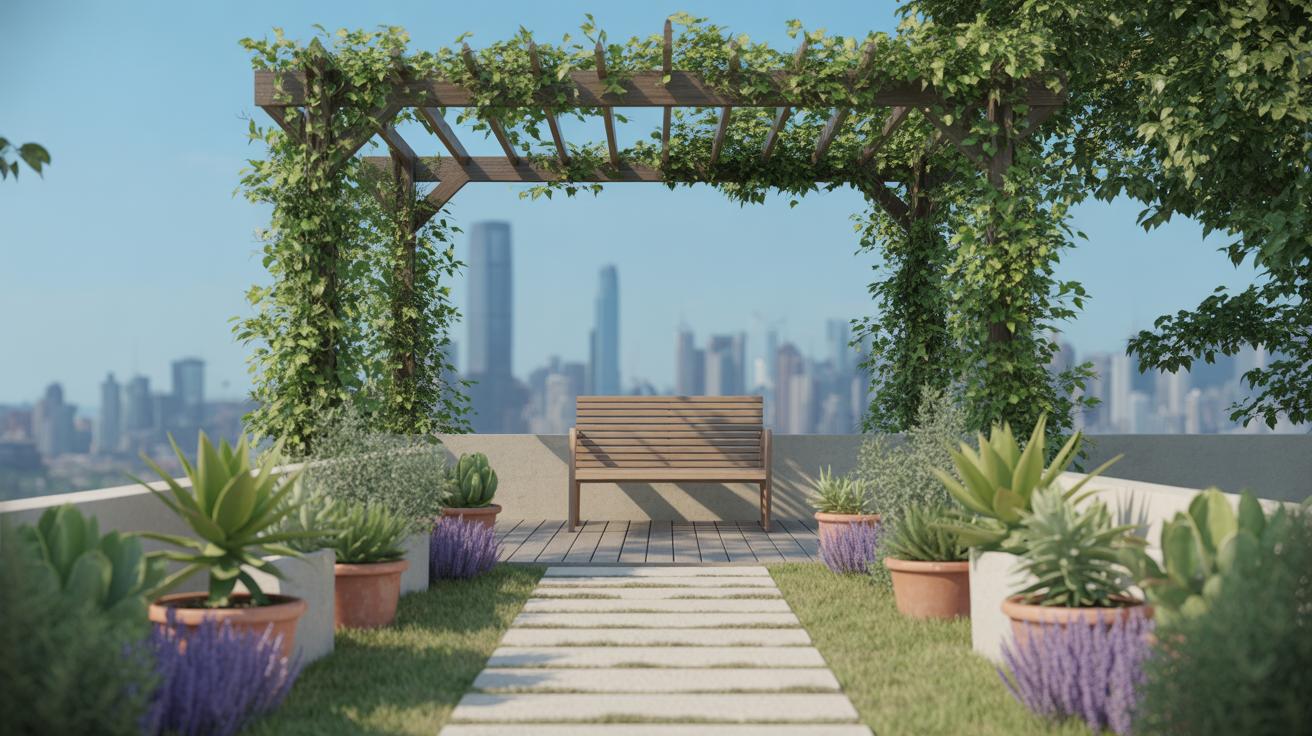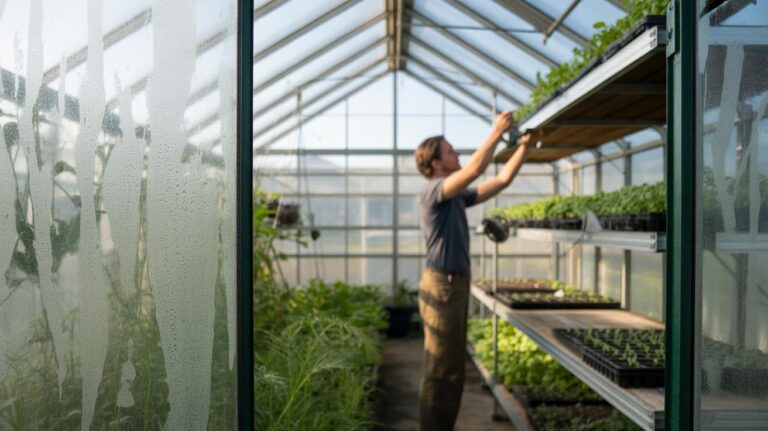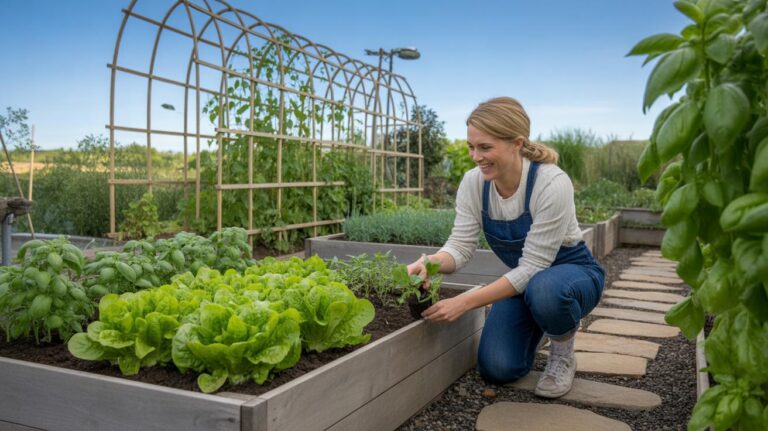Introduction
Big Impact Ideas For Small Front Yard Landscaping can change the look and feel of your home. Even if you have a small front yard, you can make it stand out with thoughtful design. A well-planned front yard adds charm and increases your home’s value.
In this article, you will find easy and smart ideas on how to use your small space effectively. We will discuss design tips, plant choices, and ways to make your front yard inviting and attractive.
Plan Your Space Wisely
Start by really looking at your small front yard. Don’t just eyeball it—take a moment to assess the space carefully. What are the exact dimensions? Where do shadows fall most often? Is your yard mostly shaded by a large tree or does it get sun all day? These things will shape your plan in ways you might not expect.
Measuring your yard isn’t just about length and width. Note any existing features like pathways, porch steps, or utility boxes. Think about how you use the space now, and how you’d want to feel when walking up to your door. A messy or cramped entry can be inviting in its own quirky way, but usually, neat planning helps make small areas feel bigger.
Sunlight plays a big role. Does your yard get morning or afternoon sun? Or maybe it’s shaded most of the day? How about the soil beneath your feet—is it sandy, clay-heavy, or soft and loamy? Soil can sometimes surprise you. I once found clay in a yard that looked perfect for flowers but needed some work before planting.
Climate also matters. Knowing local temperature swings, rainfall, and even wind patterns can change which plants thrive. It might be tempting to pick the flashiest blooms, but if they don’t match your yard’s conditions, they’ll struggle. Wouldn’t you rather invest in a few plants that do well, rather than replace dead ones every season?
Layering these observations—space, light, soil, climate—makes a clearer picture. Sketch your yard roughly on paper or use an app. Mark sunny spots, shady patches, and note soil conditions if you can. This map won’t be perfect, but it gives you a better grip on what you’re working with before digging in.
Choose The Right Plants For Compact Areas
Picking plants for a small front yard isn’t just about size; it’s about how they grow and what they need to thrive. Small or slow-growing plants usually fit better because they don’t overwhelm the space or require constant pruning. You want plants that keep their shape and don’t send roots sprawling everywhere, making your yard feel even tighter.
Think about these points when selecting plants:
- Size at maturity matters more than what they look like starting out—you wouldn’t want a shrub that’s cozy now but turns into a bush the size of a small tree.
- Growth habits affect maintenance. Compact, clumping plants or those with neat, upright growth save room and time.
- Maintenance needs are crucial. Low-maintenance choices can keep your front yard manageable, especially if your time is limited.
Evergreens offer a solid base by keeping your space green year-round. Mixing these with seasonal flowers adds pops of color that change with the seasons and avoid monotony. I once planted boxwoods (which stay tidy and green) alongside spring tulips, and it made the whole front garden feel alive through winter and vibrant come spring.
It’s tempting to plant something lush and fast-growing for instant coverage. But slower growth usually means less trimming and less stress on the space overall. Small yards can benefit from patience—it pays off when your plants don’t fight each other for space or sunlight.
So, which plants feel right for your yard? Evergreens like dwarf hollies and slow growers like lavender fit many small yards. Perhaps try mixing the predictable with the colorful and see how your space reacts. You might find your sweet spot is somewhere in between fuss-free greenery and seasonal excitement.
Create Visual Interest With Layout
A small front yard doesn’t have to feel cramped or dull. The way you arrange plants, paths, and shapes can add surprising depth to even the tightest spaces. Play around with the layout beyond straight lines and right angles. A square plot is often seen as limiting, but it doesn’t have to be.
Use Curved Paths And Shapes
Curves have an interesting effect in small yards—they can trick the eye into thinking there’s more room than there really is. A gentle winding pathway, instead of a straight shot to your door, invites you to explore. It slows down movement just enough to appreciate your plants and details along the way.
Think about incorporating rounded garden beds or softly curving edges. They break up the space and reduce that boxed-in feeling many compact yards suffer from. The curve’s gentle flow tends to feel more welcoming, too—making a front yard look inviting, even if it’s small.
Add Layers With Plants
Layering plants by height adds complexity and depth. It’s not just about tall trees or bushes and low flowers—try mixing mid-height shrubs with ground covers and even some trailing vines if you’ve got a vertical surface or walls.
You might plant a cluster of taller grasses or small shrubs near the back or sides, then fill in with shorter perennials in front. This layering guides the eye upward and around, which helps the space feel larger and less flat.
But remember, layering doesn’t mean overcrowding. Leave breathing room between plants. Too much density can make things look messy and smaller, which you want to avoid. I often find myself tweaking the layers several times before something just “feels” right—so don’t be surprised if you do, too.
Incorporate Hardscaping Elements
Hardscape features like pathways, rocks, and edging play a subtle but crucial role in small front yards. They help structure the space without overwhelming it. When your yard is compact, these elements can create a sense of order and direction, which might otherwise feel lost in a tight area.
Keep pathways simple and narrow. Wide, winding paths may look nice but can eat up precious space fast. A straight or gently curving narrow path gently guides visitors without making the yard feel smaller. For example, a 2-foot-wide gravel or paver path can be enough, especially when bordered neatly. Plus, simple paths are easier to maintain, which is always a bonus if you don’t want to spend all weekend on yard work.
Decorative stones and edging do more than just mark boundaries. They define planting beds and separate materials in a way that adds tidy, clean lines. Sometimes, the smallest stone border can make a garden bed look crisp and well cared for, even if the plants are still young or sparse. Edging can be done with bricks, metal strips, or natural stone—whatever fits your style and budget.
Think about how each hardscape feature interacts with the greenery you choose. They should complement, not compete. Have you noticed how a modest border can make your plants pop? That contrast might be exactly what your front yard needs to feel more put together without feeling cramped.
Add Functional Features
Your small front yard can go beyond just looking nice—it can serve a real purpose in your daily life. When space is tight, every element needs to pull double duty, adding both charm and usability. Think about little touches that invite you to stop, stay a moment, or simply make the front area easier to manage.
Include Seating Or Small Benches
Seating in a small front yard might seem unnecessary at first. But, placing a compact bench or a simple chair can change how you interact with your entryway. It offers a spot to rest, maybe while waiting for the mail or just catching a breath before heading inside. Plus, it adds a human scale to the yard, making it feel lived-in rather than bare.
Choosing the right seat is key. Look for something narrow or foldable if space is extremely limited. A wooden bench with storage underneath can hold gardening tools or outdoor cushions. Metal or wrought iron options can be sleek and take up less visual space, while still offering comfort. Even a single chair, positioned thoughtfully, can create an inviting pause point, without crowding the area.
Install Attractive Lighting
Lighting changes the game at night, both in terms of safety and aesthetics. Small front yards can benefit from subtle, well-placed lights. These can highlight plants, hardscape edges, or a path that might otherwise be hard to navigate after dark. Solar-powered options are easy to install and don’t need wiring, which often suits smaller spaces.
Consider mixes of lighting styles. Low ground lights can mark borders, while a softly glowing lantern by the door adds warmth. String lights might seem like overkill, but when used sparingly, they can create a welcoming, cozy feel.
Keep in mind not to overdo it—too much lighting can overwhelm a small area. So, focus on accenting key features or pathways. Good lighting not only helps guests find their way but also boosts your yard’s curb appeal when the sun sets.
Use Color To Enhance Your Yard
Color plays a surprisingly big role in how your small front yard feels. It sets the mood, catches attention, and can even make your compact space appear larger or cozier. When choosing colors, think beyond just “what looks nice.” Ask yourself what feeling you want—calm, cheerful, welcoming—and use plant and accessory colors to support that.
Combine contrasting colors to make certain areas pop. Bright reds against deep greens or yellows near purples can create eye-catching spots that break up any monotony. I once planted orange marigolds next to blue salvia, and the pair drew people right to my doorway—it was almost like a visual invitation.
Yet, it’s worth pausing before mixing too many clashing shades. Too many contrasts might make your yard feel chaotic rather than lively. A few well-chosen contrasting plants or pots can brighten the space without overwhelming it.
On the other hand, matching colors with your home’s exterior pulls everything together. If your house has cool tones like gray or blue, consider plants with silvery foliage or soft purples. For warmer brick or tan exteriors, reds, oranges, and yellows often complement nicely. This doesn’t mean your flowers should blend in and disappear—just think of them as part of the same visual family.
Sometimes, subtlety wins. Even a single splash of color that echoes your door or shutters can enhance the entry point more than a thousand mismatched blooms. Are you willing to try a bolder mix, or do you prefer a color scheme quietly speaking for itself? Either way, planning around color keeps your small yard from feeling flat or forgotten.
Maintain Your Small Front Yard Easily
Keeping a small front yard looking neat doesn’t have to be a big chore. You can spend just a few minutes here and there and still have your space looking inviting. The trick lies in choosing the right plants and sticking to simple, regular care habits.
Implement Low-Maintenance Plants
When time or energy feels limited, plants that thrive with little fuss become your best friends. Think about drought-tolerant varieties like lavender, sedum, or ornamental grasses. These types don’t need frequent watering, and many resist pests naturally. Succulents also work well for spots with plenty of sun; they store water and can survive some neglect. Not every part of your yard has to be green—consider hardy ground covers or small shrubs that won’t outgrow their space or demand constant pruning.
Plan Regular Simple Care Routines
Instead of tackling everything at once, try spreading small tasks throughout the week. For example, spending five minutes twice a week to pull weeds or check for dry spots can make a big difference. A quick weekly sweep of fallen leaves or trimming of a few branches keeps things tidy without feeling overwhelming. Even watering needs can be set on a simple schedule. The goal is to create habits that don’t eat up your weekend but keep your yard from looking neglected.
Would you find it easier to care for your yard if you combined chores with something else, like morning coffee? I ask because, honestly, sometimes I do it just to have an excuse to step outside briefly. It’s surprising how little effort can maintain a nice appearance over time.
Personalize Your Small Front Yard
Your small front yard is more than just a patch of grass or a space by the walkway. It’s a chance to share a bit of yourself with anyone passing by. Adding details that speak to your style doesn’t have to be complicated or take up all your available space. In fact, small touches can create a surprisingly big impact.
Think about creative decor pieces that reflect what you like. Maybe a tiny statue that makes you smile, quirky pots with shapes you enjoy, or even a piece of outdoor art that feels uniquely yours. These items don’t have to overwhelm the space or look perfect. Sometimes a few carefully chosen objects, slightly unexpected or imperfect, give the yard character and invite a closer look.
When picking plants, go for those you genuinely like. It’s tempting to follow trends or what looks “right,” but what about that little lavender bush you’ve always loved? Or maybe a favorite flowering vine that crawls just enough without taking over? Choosing plants with meaning for you not only makes watering and care feel rewarding but also turns the front yard into something personal rather than assembled.
- Add a small, meaningful statue or figurine—perhaps something that reminds you of a place or memory.
- Use pots that showcase your favorite colors or styles. Don’t be afraid to mix and match; uniformity isn’t the goal.
- Plant what you actually love, even if it’s unconventional for your area or front yard—everything doesn’t need to fit the “standard” mold.
What little details would make you smile when you come home? Sometimes, those are the best starting points.
Conclusions
Small front yard landscaping is about making the most of your space. Using clever designs and the right plants can bring life to your front yard. You don’t need a large area to create a welcoming and stylish garden.
By choosing simple ideas and practical steps, you can turn your small yard into a place that reflects your style. Think about your yard as a chance to add character and joy to your home.

